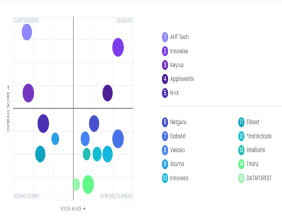Highlights
Babcock International Group PLC (LON:BAB) surges within the FTSE 100 and FTSE 350
Market response follows confirmed NATO plans that boosted defence-related sentiment
Broader FTSE indices recorded declines despite gains from select defence firms
Babcock International Group PLC (LON:BAB), a key player in the defence and aerospace sector, is listed on both the FTSE 100 and the broader FTSE 350 indices. The company operates with a diversified service model, including engineering support for military fleets, nuclear infrastructure maintenance, and training support. Activity within the sector saw noticeable uplift following NATO's renewed fiscal commitment towards defence expenditure, coinciding with a broader economic context marked by inflationary concerns and monetary tightening.
Market Context and Broader Index Movements
Despite a positive trajectory for select defence-focused companies, including Babcock, the general performance of FTSE indices was negative. External macroeconomic pressures weighed down broader market sentiment. European equities experienced declines alongside the London market, reflecting a regional cooling off that aligned with energy price movements and moderated labour trends in the UK. While Babcock showed upward momentum, other constituents within the same indices presented subdued trends.
Key Sector Catalysts Driving Recent Movement
The confirmed increase in spending commitments from NATO influenced sentiment across defence-related entities. Babcock's operational alignment with naval and land system projects, including submarine support and fleet maintenance, positioned the company prominently. The uplift in its share activity appeared to contrast the general performance across equity markets during the same period. In parallel, oil price movements and shifting inflation forecasts served as wider themes influencing asset behaviour across multiple sectors.
Labour Market and Economic Signals in Focus
The UK’s employment landscape has demonstrated signs of cooling, with compensation growth reportedly trailing current inflation indicators. These labour signals have contributed to shaping expectations about broader economic conditions. Defensive stocks often attract attention under such market circumstances, and in the case of Babcock, its categorisation under defence and essential service provision may have supported its relative strength.
Impact of Geopolitical Events on Commodity and Defence Segments
Developments in international geopolitics, including ceasefire declarations, influenced commodity pricing dynamics. Oil benchmarks recorded downward adjustments, with ripple effects extending into global markets. While this presented a headwind for energy stocks, the defence sector experienced a differentiated movement. The activities of Babcock within military infrastructure and sovereign contracts correlated with increased visibility within financial media coverage, aligning with market interest in defence allocations amid renewed security dialogues.
Sector Positioning Within Broader Indices
Babcock’s inclusion in both FTSE 100 and FTSE 350 provides exposure to a wide range of institutional trackers and index-aligned strategies. The firm’s visibility in these indices underscores its scale and relevance within the UK equity landscape. Its presence also amplifies the stock’s movement within key benchmark indices that reflect sentiment during volatility.
Dividend Profile and Defensive Appeal
The company has remained on radars aligned with dividend consistency. It is sometimes referenced within FTSE Dividend Stocks segments based on its periodic distributions. Amid market phases characterised by caution, such profiles are often sought for generation through traditional instruments. The combination of engineering operations and recurring service contracts contributes to continuity within its operating framework.
Broader Market Sentiment Reflects Divergence
During recent sessions, market-wide indicators have presented contrasting trends. While firms like Babcock marked upward ticks, broader indices in London and across the eurozone pointed downward. This divergence underscores the influence of sector-specific catalysts compared to macro-level market movements. Defensive industry dynamics, such as those impacting Babcock, have played a distinct role in separating certain equities from overarching index trajectories.
_06_23_2025_17_02_03_219040.jpg)



